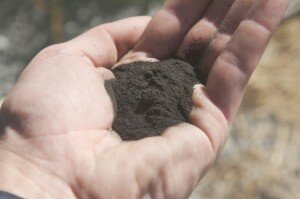Biochar: A new way of capturing carbon
As part of an international effort to combat climate change, researchers worldwide are exploring new ways of reducing greenhouse gas emissions. One such method is Biochar, which takes organaic matter and burns it in a pyrolysis oven with no oxygen to produce a charcoal form and a renewable gas fuel by-product called Syngas. Carbon that would otherwise be released from the breakdown of organic matter is trapped in the biochar for hundreds of years and if returned to the ground has been shown to increase the fertility of soil.
Countries including Canada, Spain, Portugal and Denmark have already decided to go ahead with biochar as a way of reducing their carbon footprint. In Australia however, the federal government does not recognise biochar as a method of sequestering carbon, claiming the science is unproven. The Climate Change Minister, Penny Wong has stated that “soil carbon (including biochar) does not fit within the scope of the current Kyoto Protocol accounts, so is not included at this time in the Carbon Pollution Reduction Scheme”.
In NSW a renewable energy company called Best Energies has setup a pilot scheme to validate the technical feasibility of biochar. So far Scientists believe biochar has the potential to reduce Australia’s carbon emissions by 1 gigatonne, which is around to 20 percent of Australia’s total carbon emissions. This is a very significant reduction, however without recognising biochar within Australia’s future emissions trading scheme there is little financial incentive for the commercial sector to invest in this technology.
The government is already spending millions in carbon capture research in the coal sector, but compared to biochar is a technology not yet in existence. The CSIRO are also researching the potential merits of biochar and its affect in different soil types, however are dependent on overseas funding. Biochar is an exciting prospect and with gaining momentum worldwide it is questionable as to why the Australian government is taking a sceptical stance. Hopefully new light on the properties of biochar will be in favour of Australian conditions and government support turned around. With increasing drought and a large agricultural sector in Australia the potential benefits of biochar should not be overlooked.
What do you think?
For more information have a read of the CSIRO biochar fact sheet at, http://www.csiro.au/resources/Biochar-Factsheet.html
A recent video report is also available from The ABC’s 7:30 Report website, http://www.abc.net.au/7.30/
|
Wouldn't you like to HALVE this cost? AND do something to slow climate change... Delamping your fluorescent fittings is a simple, reliable, low-cost way of slashing your lighting energy costs - and greenhouse gas pollution. Click here to get your free report on how to delamp.
|
||


 The average double fluorescent light fitting (probably like the one above your head right now) uses $800 of electricity over its life time.
The average double fluorescent light fitting (probably like the one above your head right now) uses $800 of electricity over its life time.
February 20th, 2009 at 11:23
I’m confused about this issue. I have just received this alternative view of biochar, please let us know what you think of the issues it raises:
http://www.biofuelwatch.org.uk/docs/biocharbriefing.pdf
February 25th, 2009 at 8:29
Thanks for your contribution - this is a very interesting article. Certainly it pays to be a bit skeptical of “magic bullet” solutions to climate change considering that the carbon we have released over the last hundred years took hundreds of thousands or millions of years to be formed. Well documented medium to large scale trials where before and after carbon measurements can be taken would provide more evidence as to the usefulness of biochar. I don’t know of any such trials.
This reinforces the urgent need to greatly reduce carbon emissions as soon as we can.